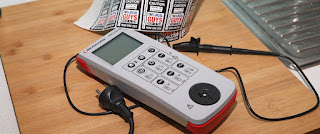A Quick Overview of PAT Testing
The practise of assessing the performance and safety of electrical equipment and systems in the workplace is generally referred to as PAT Testing. Although the process is more commonly known as In-service Inspection and Testing of Electrical Equipment, the name itself functions as a (tautological) shorthand of the term Portable Appliance Testing.
Before we look at how PAT testing is really done by test and tag services perth, it's important to understand why it's done and what the standards are. The main goal is to ensure the safety of electrical equipment, but it is also critical to keep track of the safety of individual electrical items and when they will require follow-up inspections after an evaluation.
The first steps in guaranteeing an electrical appliance's safety should preferably be taken by its users, who should be encouraged to conduct basic visual checks every time they use it. Faults such as frayed or loose wires can be detected (and repaired) by anybody at any time, without special training, and should not pose a risk until the next scheduled PAT test.
Before performing a specific PAT test, a skilled tester should conduct a visual inspection of the appliance, using their experience, to look for external evidence, which will be present for the great majority of defects. After completing a formal visual inspection, a PAT test should be conducted by a skilled individual utilising the relevant testing tools.
PAT Testing is done by who?
Anyone with proper training and/or who is deemed competent can perform the actual PAT testing. This could be a member of staff from the company who has undergone training, such as a City & Guilds qualification (although there is no universally accepted qualification for testers), or an outside organisation.
There are obvious advantages to both; using internal staff may result in lower labour costs and greater flexibility, but using specialist PAT Testing companies would result in a higher level of expertise - gained from performing tests day in and day out - as well as eliminating the need to purchase the necessary testing equipment separately. Because PAT testing is a task that heavily relies on the tester's judgement, the latter method may ultimately be preferable.
The level of testing that each electrical appliance warrants or requires is determined by the International Electrotechnical Commission's classification system (IEC). Knowing how to identify the class of an appliance and the testing it requires is one of the most important aspects of PAT testing.
Class 1 goods have wires with only one layer of insulation, thus they must be examined for earthing. Class 2 goods, on the other hand, contain two layers of wire insulation and hence do not require an earth test. Appliances with a low voltage supply that must be less than 50V are classified as Class 3 products and should come with a designated transformer. Separated Extra Low Voltage is a term that is frequently used to describe them.
Class 2 and 3 items should be labelled as such, and appliances that do not have a label should be considered Class 1. Classes 0 (non-earthed) and 01 (earthed) are two further classes to be aware of that employ two core cables, however these were banned in 1975.
Depending on the specific requirements of the project at hand and the capabilities of the PAT tester, a variety of tools can be used to do PAT testing.
Pass/Fail devices, which, as the name implies, merely provide the user a pass or fail reading, are the most basic testing devices that are commonly utilised by in-house testers inside an organisation. In-house testers employ these devices because of their ease of use and the fact that they do not require the user to have specialised skills or training. The devices will primarily test for pass/fail based on criteria such as earth continuity, insulation resistance, and a wiring check.
Some, on the other hand, have features such as the ability to print test findings on labels that may be attached to the appliance being tested, as well as the ability to be battery operated, allowing the user to travel between appliances more easily. While testers may be able to do tagging, they will not be able to save the results, therefore they will need to be logged elsewhere.
There are more advanced PAT devices available for PAT Testers that are more experienced or highly qualified, usually at specialist PAT testing and tagging perth companies, which provide more in-depth testing metrics and more extensive capability to handle those results. In addition to basic functions, testing devices can perform checks such as fuse, lead polarity, and RCD tests, and then display and record the more complex data. In recent years, computerised PAT testers have allowed users to keep, analyse, and compare data on the device itself rather than having to transmit them to another computer.
Visit Us-
https://thelocalguystestandtag.com.au
https://www.facebook.com/thelocalguystestandtag
https://twitter.com/guys_local
https://www.instagram.com/thelocalguys_test_and_tag/

Comments
Post a Comment